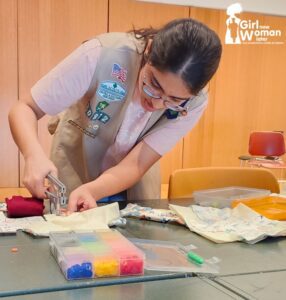Most of us rarely think about the toilet. It’s just there, and frankly, it can gross us out to think about it. But what our inner hypochondriacs may not realize is just how much we take the toilet for granted.
We might think of the toilet as a ubiquitous thing. There’s a toilet in our homes and our offices, and there are public restrooms at every corner. So it comes as a surprise that around 3.6 billion people worldwide live without safe access to sanitation. For many communities in less-developed countries, this poses a significant threat to young girls and women.
Lack of access to proper sanitation can increase the risk of violence against women and girls in less-developed and marginalized communities. In low-income countries such that in Africa, women are frequently forced to manage their needs in the open as there are no toilets available. Often out of desperation to seek privacy, women might conduct their needs after dark by a roadside or at dawn in a field. This increases the risk of being subjected to sexual assault and violence as they have to conduct their needs in the dark while in open spaces.
In school environments, the lack of adequate sanitation facilities prevents young girls from successfully pursuing and attending school. 50% of young girls in Africa have reportedly dropped out of school because they do not have basic toilets available. This is common in most less-developed countries, where governments lack the budget to construct sanitation facilities for schools in need of them, and schools have faced financial struggles to keep up with the recurring costs of maintaining them.
Facilitating menstrual Facilitating menstrual hygiene management becomes a serious issue for girls and women on school grounds when adequate toilets are absent. Young girls would skip school out of shame of having their monthly cycle, and even if she were to have a sanitary napkin in hand, there would be no place in school where she’d be able to change into it privately and properly.
Issues with sanitation are also issues with water. We might not realize it, but a lot of us have it easy, with the switch of a tap to receive our drinking water. According to UNICEF, less than 50% of schools in West and Central Africa have access to water, and less than 40% of schools have proper access to adequate sanitation. Access to water is a women’s issue, especially as young girls and women are often responsible for fetching water for their households to drink, bathe, and cook with. Collecting water takes up a huge chunk of her day, which means that women would not be able to maintain a steady job or pursue an education.
There is also the concern about water that is not safely managed, and how it disproportionately affects women and girls. Not all water sources are reliably clean and, as such, families are left with no option but to drink the contaminated water. This can lead to illnesses such as diarrhea, which prevents women from working and young girls from attending school. When attending to her menstrual cycle in school, cleaning the blood off her hands and clothes would be challenging, as water that’s available on school grounds tend to be located further away from the toilet facilities.
It becomes increasingly urgent to hear that most of the world is off track to ensure safe toilets for all by 2030. It is therefore a paramount issue that many people around the world lack access to water and sanitation facilities, and it’s especially injustice to the girls and women who have been denied the opportunity to reach their full potential because of this. Access to safe toilets and safe water at all times allows girls to stay in school, and women to pursue work. We might not enjoy talking about the toilet, but that doesn’t mean we should flush down the rights of girls and women.
Kimberly, Andy





